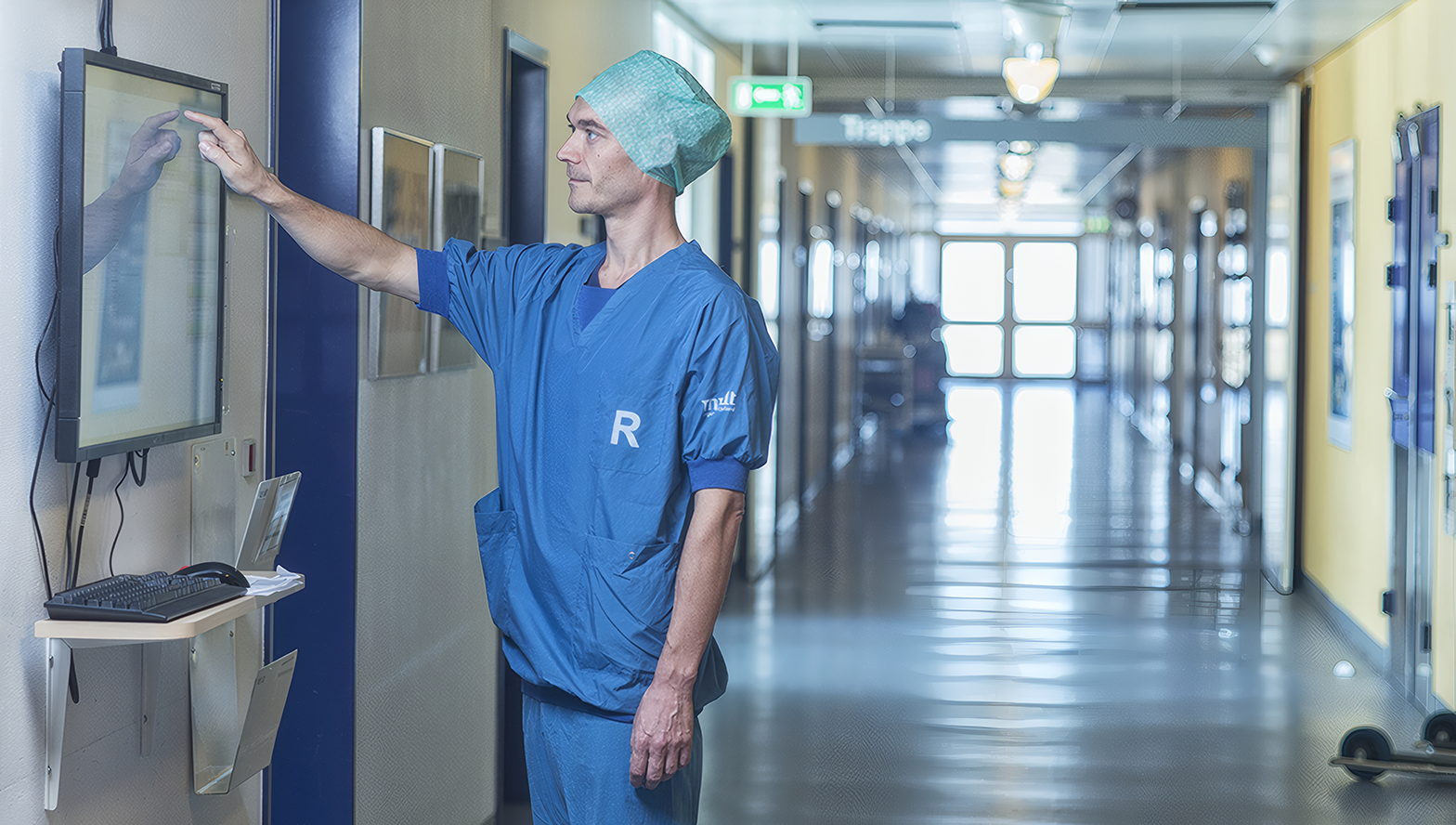

8 min.
May 25, 2023
With GS1 standards, blood samples in the North Jutland Region are safer en route
Text:
Lasse Jacobsen
Photo:
Internal
Loads of blood samples sent from GPs around the North Denmark Region used to have to be unpacked and sorted manually so that they ended up in the right hands at the Clinical Biochemistry Department at Aalborg University Hospital.
- It was not a job you were particularly happy about. Your joints hurt," says Annebirthe Hansen, chief physician at the same department.
A bioanalyst who was tired of joint pain from sorting had the idea for a smarter solution. The idea was sent to the Idea Clinic, an innovation unit with the aim of supporting and realizing innovative proposals within the healthcare sector in the North Denmark Region, and the development of the Intelligent Dispatch Box began.
After eight years of innovation with Idéklinikken and Intelligent Systems, the system is now a reality, ensuring more efficient and gentle handling of samples.




ABOUT THE SHIPPING BOX
- The development project was launched in 2012 to solve the challenges faced by laboratories.
- The companies LT Automation and Intelligent Systems were responsible for running the project.
- It has been a close collaboration with Aalborg University Hospital and Odense University Hospital with their knowledge and experience in the biochemical field and laboratory workflows
- The result is a solution that creates greater safety, quality and a more efficient laboratory with a better working environment.
(Source: Forsendelseskassen.dk)
21 degrees is important
The shipping box is built using GS1 standards. It ensures that the blood samples taken at GPs are transported under the right conditions.
In the past, doctors were responsible for things like centrifuging and transporting the blood samples. But the quality could be variable. This led to a blood sample collection system, and at the clinical biochemistry department in Aalborg, this meant 120 boxes delivered twice a day and subsequent manual sorting.
The general practitioners have climate cabinets with monitoring, and the vehicles that transport the blood samples are specially designed to maintain 21 degrees.
- In every single shipping box, there is an RFID device that also measures the temperature continuously. We have full monitoring of the temperature in relation to how the samples have been stored," explains Annebirthe Hansen.
Temperature is important for the quality of blood samples - 21 degrees plus or minus one degree.
- The dispatch box has led to better quality assurance, but there is also better patient safety, as we have fewer adverse events, such as entire boxes being lost.
The shipping box is built using GS1 standards. It ensures that the blood samples taken at GPs are transported under the right conditions.
In the past, doctors were responsible for things like centrifuging and transporting the blood samples. But the quality could be variable. This led to a blood sample collection system, and at the clinical biochemistry department in Aalborg, this meant 120 boxes delivered twice a day and subsequent manual sorting.
The general practitioners have climate cabinets with monitoring, and the vehicles that transport the blood samples are specially designed to maintain 21 degrees.
- In every single shipping box, there is an RFID device that also measures the temperature continuously. We have full monitoring of the temperature in relation to how the samples have been stored," explains Annebirthe Hansen.
Temperature is important for the quality of blood samples - 21 degrees plus or minus one degree.
- The dispatch box has led to better quality assurance, but there is also better patient safety, as we have fewer adverse events, such as entire boxes being lost.
Less manual work - better patient safety
The dispatch box has not only improved patient safety, but also the work environment, reduced workplace injuries and saved up to half a man-year.
Annebirthe says that during her time at Aalborg University Hospital, there have been two cases where employees have had long-term work-related injuries. One of them never actually returned to work again.
- So now we can use our staff resources more optimally and avoid manual procedures. We have been able to save between a quarter and half a man-year," says Annebirthe.
The technology with climate cabinets, the Intelligent Dispatch Box and robot is expected to become standard in future hospitals, according to Annebirthe, who knows that there may be challenges in spreading the solution.
- It took eight years of development from the idea to the finished robot. Lack of space is often a problem for many laboratories. You have to think about it in hospital construction from the start.
But Annebirthe Hansen is confident that this solution for handling blood samples will be a future requirement from the Danish Accreditation Fund, DANAK (unit that accredits and approves laboratories).




THE VALUE CHAIN FOR THE SHIPPING BOX
- Carrier logs in. The carrier scans an employee ID and the system automatically logs in with a personal code. You are then automatically taken to "register vehicle", so the system can always link carrier, route, vehicle and boxes together.
- First stop on the route. The carrier drives to the first stop on the route and scans the unique location barcode, a GLN number that uniquely identifies the location. Once the location is confirmed, the carrier can start scanning the boxes.
- Delivery and pickup. The handheld scanner can scan all boxes at once via RFID. The transporter simply holds the scanner over all boxes for delivery and pickup and the system, using the GS1 standard GRAI, an identification number that can track and collect data about an asset, can detect which boxes are full and need to be picked up and which boxes are empty and need to be delivered to the medical practice.
- Integration with third-party systems. All data is sent directly to the IntelligentID cloud solution, which facilitates integration with e.g. Webreg, so all blood samples can be uniquely identified throughout the value chain. This enables answers to medical practices and increases patient safety and quality.
- The box warehouse. The intelligent box warehouse can handle the inbound and outbound delivery of shipping boxes, giving carriers easy access to deliver full shipping boxes and empty shipping boxes to a new value chain - all in a very short time. The box warehouse automatically reads data from the box and then queues the box for emptying based on set parameters - time, content and temperature.
- Clinical Biochemistry Department. The shipping box is received either via the box warehouse or conveyor and the location is automatically scanned by the RFID scanner. The box is placed either automatically through integration with the checkout warehouse or manually on a conveyor belt on its way to automatic handling.
- Deviations. The robot solution automatically reads the boxes and if the box data does not meet the set criteria, e.g. temperature deviations, shock detection, transportation time and traceability, the box is automatically rejected for manual inspection. If the box data meets all criteria, it is automatically handled by the robot solution.
- Automatic sorting. The robotic solution automatically opens, empties and sorts blood samples. The modular design allows the robot solution to be customized and integrated as needed.







